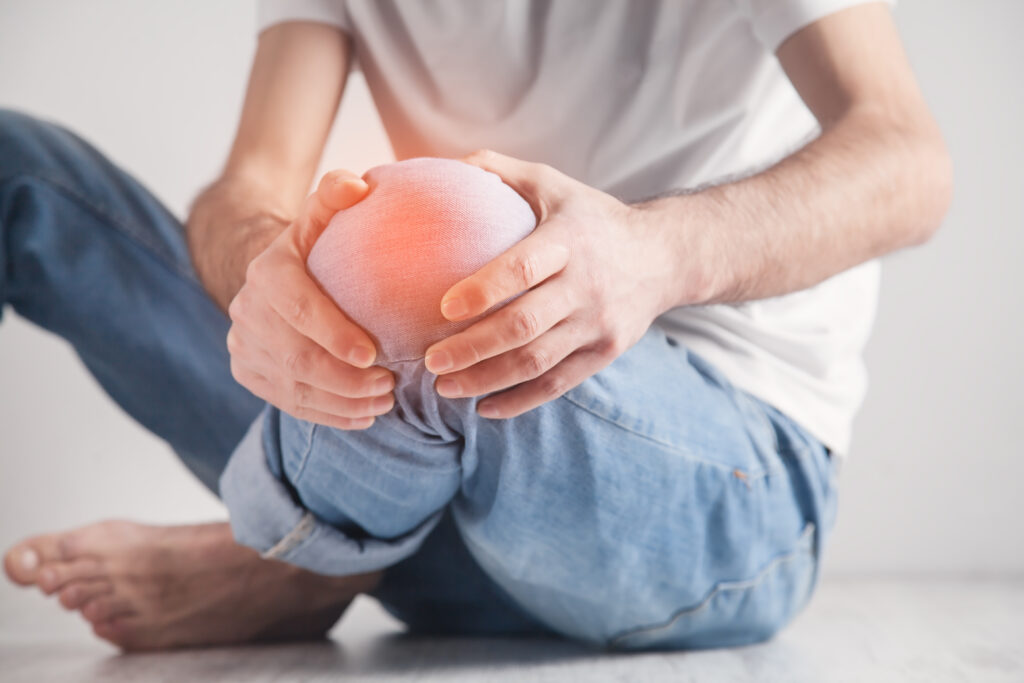If you're grappling with back pain, you're not alone, and understanding the best techniques for relief can greatly improve your quality of life. From effective stretching and strengthening exercises to the benefits of heat and cold therapy, there are various methods worth exploring. Professional treatments and lifestyle adjustments also play an essential role in managing discomfort. As you consider these options, you might wonder which techniques could work best for your specific situation and why some approaches are more effective than others. Let's unpack these strategies together.
Understanding Back Pain Types
When it comes to back pain, understanding the different types can make a significant difference in how you approach relief. You'll soon realize that not all back pain is the same. It generally falls into two main categories: acute and chronic.
Acute pain usually arises suddenly, often due to an injury like a muscle strain or a herniated disc. You might feel a sharp, intense discomfort that limits your movement. This type of pain typically resolves within a few days or weeks with proper care.
On the other hand, chronic pain persists for three months or longer. You might experience a dull ache or persistent discomfort that can affect your daily activities. Chronic pain may stem from conditions like arthritis, degenerative disc disease, or previous injury complications.
Understanding whether your pain is acute or chronic can guide you in choosing the right relief strategies.
You should also consider the specific location of your pain. For instance, lower back pain (lumbar) is often caused by poor posture or prolonged sitting, while upper back pain (thoracic) may be linked to stress or tension.
Identifying the type and location of your pain allows you to tailor your approach to treatment. Whether it's seeking medical advice, adjusting your work environment, or considering lifestyle changes, knowing the type of back pain you're dealing with is essential.
This understanding empowers you to take control and find effective relief methods that suit your specific needs.
Effective Stretching Techniques
When you're dealing with back pain, incorporating effective stretching techniques can make a big difference.
Gentle yoga poses and targeted muscle stretches help relieve tension and improve flexibility.
Let's explore how these practices can support your recovery and overall well-being.
Gentle Yoga Poses
Gentle yoga poses frequently offer a soothing way to alleviate back pain and improve flexibility. These poses help you stretch and strengthen your muscles without straining them.
One effective pose is the Cat-Cow stretch, which gently warms up your spine and promotes mobility. Start on all fours, inhale while arching your back (Cow), and exhale while rounding it (Cat).
Another beneficial pose is Child's Pose. Kneel on the floor, sit back on your heels, and reach your arms forward, allowing your forehead to rest on the mat. This position relaxes the lower back and encourages deep breathing, helping to release tension.
Don't forget the Downward-Facing Dog. From all fours, tuck your toes, lift your hips, and straighten your legs. This pose stretches the entire back and strengthens the arms and legs.
Lastly, consider the Sphinx Pose, which involves lying on your stomach and propping yourself up on your forearms. This gentle backbend can help alleviate discomfort by promoting spinal alignment.
Targeted Muscle Stretches
Targeted muscle stretches are essential for relieving back pain and enhancing flexibility. These stretches focus on specific muscles that contribute to discomfort, helping to alleviate tension and improve mobility. When you incorporate them into your routine, you'll notice a significant reduction in tightness and pain.
Start with the hamstring stretch. Sit on the floor with one leg extended and the other bent. Reach toward your toes, holding for 20-30 seconds, then switch legs. This stretch helps loosen the lower back by targeting the hamstrings.
Next, try the child's pose. Kneel on the floor, sit back on your heels, and stretch your arms forward while lowering your torso. Hold this position for 30 seconds. It gently stretches the spine and relieves tension.
Incorporate the seated spinal twist as well. While sitting, cross one leg over the other and twist your torso toward the bent knee. Hold for 20-30 seconds on each side. This stretch promotes spinal flexibility and alleviates discomfort.
Remember to breathe deeply during each stretch. Consistent practice of these targeted stretches can lead to lasting relief and improved back health.
Strengthening Exercises
Building a strong core is essential for alleviating back pain and preventing future discomfort. Core-strengthening exercises target the muscles that support your spine, helping to stabilize your body during daily activities. When you strengthen these muscles, you reduce the strain on your back, making it less susceptible to pain.
Start with basic exercises like planks. To do a plank, lie face down, then lift your body off the ground, supporting your weight on your forearms and toes. Keep your back straight and hold the position for 20 to 30 seconds. Gradually increase the duration as you build strength.
Another effective exercise is the bridge. Lie on your back with your knees bent and feet flat on the floor. Lift your hips toward the ceiling, squeezing your glutes at the top. Hold for a few seconds, then lower back down. Aim for 10 to 15 repetitions.
Incorporating exercises like bird-dogs can also be beneficial. Start on your hands and knees, extend one arm and the opposite leg simultaneously while keeping your back flat. Hold for a few seconds, then switch sides. This exercise enhances stability and coordination.
Don't forget about your lower back—exercises like supermans can help. Lie face down and lift your arms and legs off the ground simultaneously. Hold for a few seconds and lower down. Aim for 10 to 15 repetitions.
Consistency is key, so make these exercises a regular part of your routine to build a stronger core and notably reduce back pain.
Posture Correction Strategies
Strengthening your core can greatly improve your posture, which plays an essential role in preventing and alleviating back pain. You mightn't realize it, but your everyday habits, like how you sit, stand, and move, can notably impact your spinal alignment.
Start by being mindful of your posture throughout the day. When sitting, keep your back straight, shoulders relaxed, and feet flat on the floor. If you're at a desk, consider using a chair that supports your lower back.
When standing, distribute your weight evenly on both feet. Imagine a string pulling you up from the top of your head to align your spine. This simple visualization can help you maintain a proper stance. Regularly check in with your posture, especially during prolonged activities.
Incorporate posture exercises into your routine. Wall angels and chin tucks can help you develop muscle memory for good posture. These exercises strengthen the muscles that support your spine and reinforce proper alignment.
Additionally, be cautious with how you lift items. Always bend your knees and keep the object close to your body to minimize strain on your back.
Lastly, consider ergonomic adjustments in your workspace. The right desk height, monitor position, and chair can make a notable difference.
Heat and Cold Therapy
Using heat and cold therapy can be an effective way to manage back pain and promote recovery. When you apply heat, it increases blood flow to the affected area, helping to relax tight muscles and alleviate stiffness. You can use a heating pad, warm towel, or take a warm bath to enjoy the soothing effects.
Just make sure the heat isn't too intense to avoid burns, and limit the application to about 15-20 minutes at a time.
On the other hand, cold therapy works by reducing inflammation and numbing sharp pain. You can use ice packs or even a bag of frozen vegetables wrapped in a towel. Apply it to the painful area for about 15-20 minutes, allowing your skin to return to normal temperature between applications.
Cold therapy is especially useful within the first 48 hours after an injury, as it helps minimize swelling and discomfort.
You might find it beneficial to alternate between heat and cold, depending on your specific symptoms. For example, if you're dealing with muscle spasms, heat can help relieve tension, while cold can be effective for inflammation.
Listen to your body and determine which method offers you the most relief.
Ultimately, incorporating heat and cold therapy into your routine can provide significant relief from back pain, promoting healing and enhancing your overall well-being.
Just remember to consult with a healthcare professional if your pain persists or worsens.
Mindfulness and Relaxation
Practicing mindfulness and relaxation techniques can greatly reduce back pain and improve your overall mental well-being. These methods help you connect with your body and release tension that can contribute to discomfort. By focusing on the present moment and calming your mind, you can create a sense of peace that alleviates physical strain.
One effective technique is deep breathing. When you take slow, deep breaths, you activate your body's relaxation response, which can ease muscle tension in your back. Try inhaling deeply through your nose for a count of four, holding for four, and exhaling through your mouth for a count of six. Repeat this several times, allowing your body to relax with each breath.
Another approach is progressive muscle relaxation. This involves tensing and then relaxing different muscle groups, starting from your toes and working up to your head. As you consciously let go of tension, you'll likely feel a noticeable decrease in back pain.
Mindfulness meditation can also be beneficial. Set aside a few minutes each day to sit quietly and focus on your breath. Whenever your mind wanders, gently bring your attention back to your breathing. This practice not only helps reduce stress but can also foster a greater awareness of how your body feels, allowing you to respond to pain more effectively.
Incorporating these mindfulness and relaxation techniques into your daily routine can empower you to manage your back pain and enhance your overall quality of life.
Professional Treatment Options
While mindfulness and relaxation techniques can provide significant relief, some individuals may need additional support to address their back pain effectively. Professional treatment options can range from physical therapy to injections, depending on the severity of your condition and the underlying causes of your pain.
Physical therapy is often the first step. A trained therapist will evaluate your situation and develop a tailored exercise program to strengthen your back muscles, improve flexibility, and enhance posture. You'll likely learn specific techniques to alleviate pain and prevent future issues.
If physical therapy doesn't yield the desired results, your doctor might recommend chiropractic care. Chiropractors use manual manipulation to align your spine, which can relieve pressure on nerves and reduce pain. Many people find significant benefits from regular adjustments.
In some cases, your physician might suggest medication to manage pain. Over-the-counter options like ibuprofen or acetaminophen can be effective for mild to moderate discomfort. If your pain is severe, prescription medications or muscle relaxants may be appropriate.
For persistent pain, consider more advanced treatments like steroid injections or nerve blocks. These can provide temporary relief by reducing inflammation or blocking pain signals.
Finally, if conservative treatments fail, surgical options might be considered. Procedures range from minimally invasive techniques to more complex surgeries, depending on your unique situation.
Consulting with a healthcare professional will help you navigate these options and find the best course of action for your specific needs.
Lifestyle Changes for Prevention
To prevent back pain, you can start by setting up an ergonomic workstation that supports your posture.
Incorporating regular physical activity into your routine also plays an essential role in keeping your back healthy.
Ergonomic Workstation Setup
An effective ergonomic workstation setup can make a notable difference in preventing back pain. You want to create an environment that supports your body's natural posture and minimizes strain. Start by adjusting your chair and desk height so your feet rest flat on the floor, with your knees at hip level.
Consider these key elements for your setup:
- Monitor Position: Place your monitor at eye level, about an arm's length away, to reduce neck strain.
- Keyboard and Mouse: Keep your keyboard and mouse close enough so you can keep your arms at a 90-degree angle, preventing shoulder tension.
- Supportive Chair: Use a chair that offers good lumbar support, encouraging a neutral spine position.
Additionally, keep frequently used items within arm's reach to avoid unnecessary twisting or bending.
Don't forget to take breaks and stretch throughout the day. By making these adjustments, you'll not only enhance your comfort but also considerably lower your risk of developing back pain.
Regular Physical Activity
Incorporating regular physical activity into your routine is essential for preventing back pain. When you stay active, you strengthen the muscles that support your spine, improving your overall stability and posture. Aim for a mix of aerobic exercises, strength training, and flexibility routines. Activities like walking, swimming, or cycling can get your heart rate up while being gentle on your back.
Strength training is vital too. Focus on exercises that target your core, hips, and back muscles. Stronger muscles can better support your spine and help reduce the risk of injury.
Don't forget to include flexibility exercises, like yoga or stretching, to enhance your range of motion and relieve tension.
Set a goal to engage in at least 150 minutes of moderate aerobic activity each week. Break it down into manageable sessions—perhaps 30 minutes a day, five times a week.
Conclusion
Incorporating these techniques into your daily routine can substantially improve your back pain relief. By understanding the types of back pain, practicing effective stretches and strengthening exercises, and prioritizing good posture, you'll be on the right track. Don't forget the benefits of heat and cold therapy, mindfulness practices, and professional treatments. With a few lifestyle changes, you can prevent future discomfort and enjoy a healthier, pain-free life. Take the first step towards relief today!



